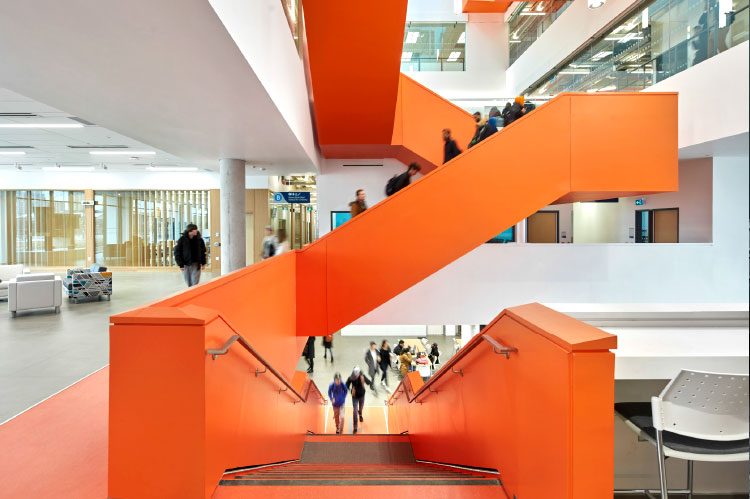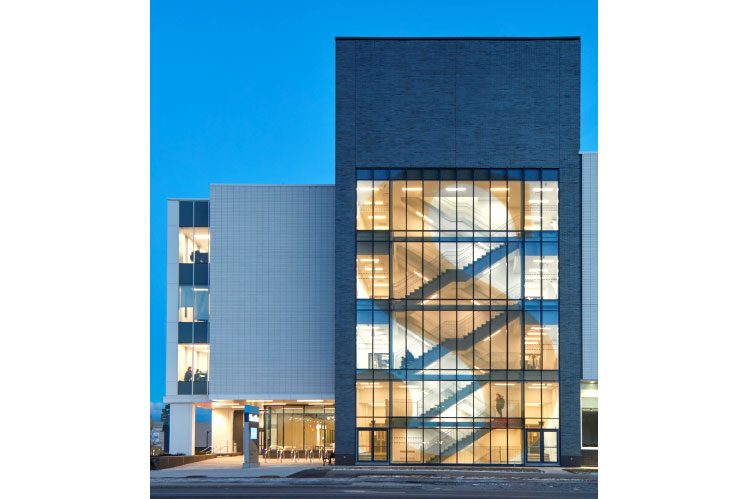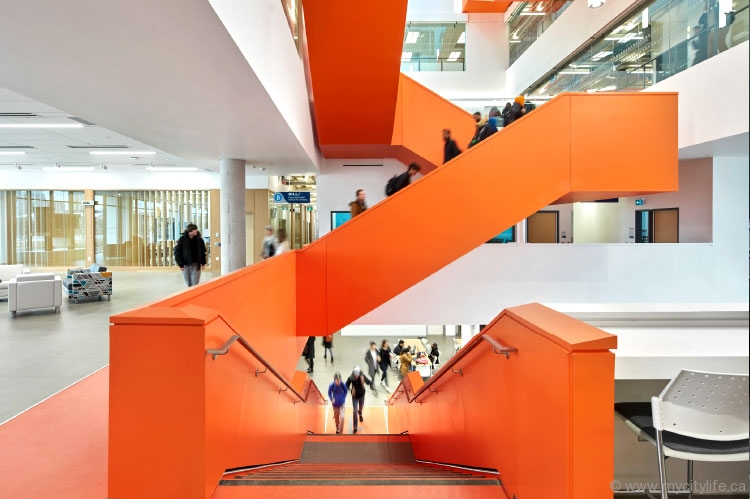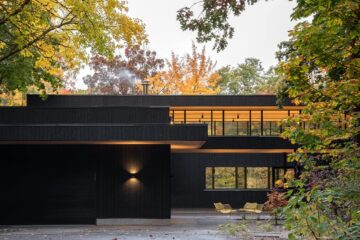Stairway to Graduation – Sheridan’s New Campus
Sheridan’s new campus in Mississauga, Ont., presents cutting-edge design-builds to inspire students and redefine traditional education architecture.
Colleges require a campus that inspires students, one that motivates them and encourages them to pursue and achieve their dreams. Architecture is proven to have an impact not only on someone’s mentality, but on their creativity. This is precisely why phase two of Sheridan College’s Hazel McCallion Campus (HMC2) was created with such intricate, extraordinary design.
Created as a joint venture by award-winning design firms Montgomery Sisam and Moriyama & Teshima, the phase two expansion is home to Sheridan’s Sustainable Built Environment Department, consisting of architecture, interior design, interior decoration and visual merchandising programs. The building combines state-of-the-art formal and informal learning spaces to become an incubator for invention and applied creativity.
At the centre of the campus sits the Creativity Commons, a double-height atrium around which a series of learning spaces gravitate. The highlight feature of the centre is the scissor stairs, escalating five storeys through the atrium, connecting all of the spaces visually and physically. As users ascend and circulate, their experience of the building changes.
By expanding the public realm through qualitative elements such as integrated and connected floor plates, openness and legibility of major programmatic elements, and a showcase of student achievements, the building redefines traditional approaches to education to support learning anytime, anywhere, encouraging encounters between users and an exchange of ideas.
With only 220,000 square feet, the campus required efficient planning to keep a compact footprint, maximizing site potential and the program area with minimal material consumption.
The architects were forced to be creative in their design in order to meet all the necessary requirements of the design-build. Vertical strips of seam metal and curtain walls interchange methodically to play with light, shadow and the level of transparency of the facade to create the building’s expression, all while maintaining an enclosure.
Efficient construction assemblies and systems design yield aggressive waste reduction and produce immense energy savings. The campus is considered to be a living laboratory with live performance informatics, interpretive signage, mock-up displays and exposed building systems, readily accessible to occupants and designed to demonstrate sustainable building practices and inspire a positive campus-wide energy culture.
www.montgomerysisam.com
www.mtarch.com
photos courtesy of Moriyama & Teshima Architects



















































































No Comment